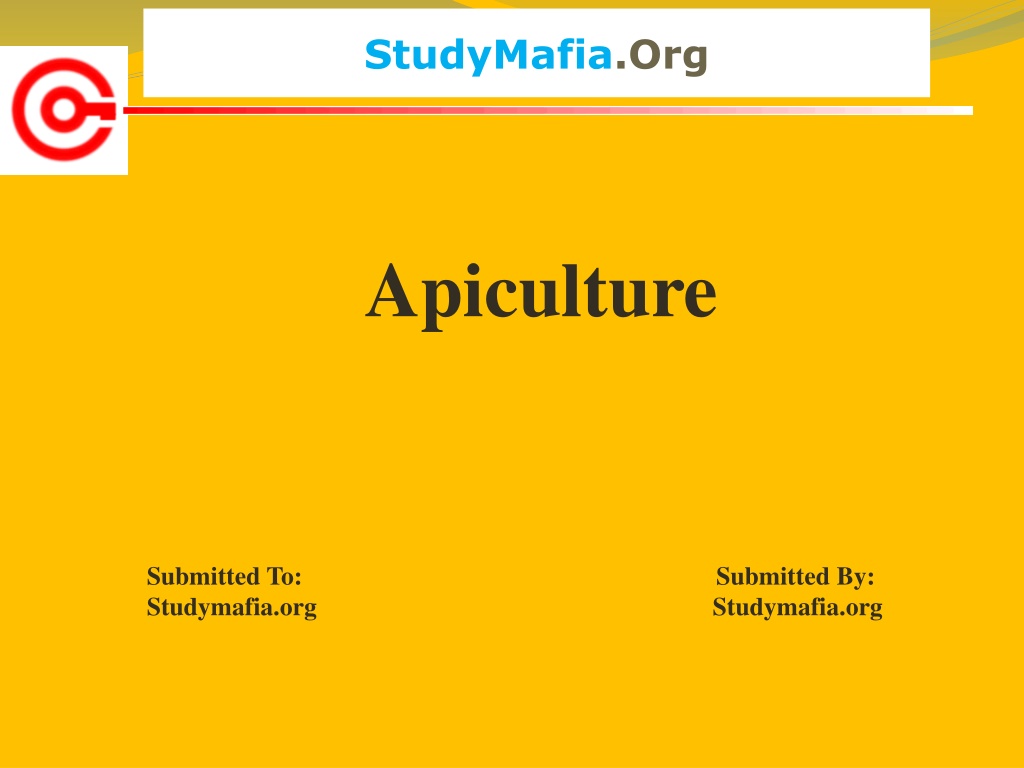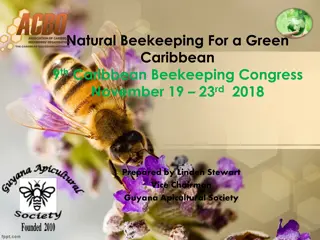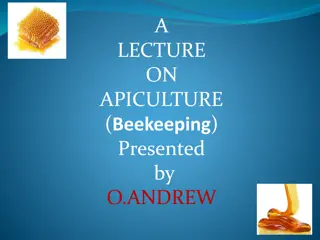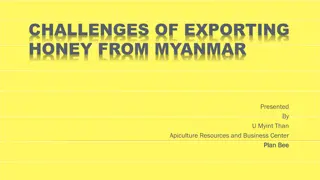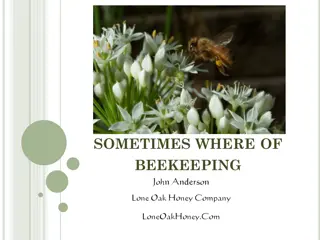Apiculture: The Art and Science of Beekeeping
Apiculture, also known as beekeeping, involves the care and management of honey bees to produce honey and wax. This ancient practice is not only significant for its commercial products but also plays a crucial role in pollination and potentially medical research. Discover more about the importance, products obtained, common bee varieties, and profitability of apiculture in this comprehensive guide.
Download Presentation

Please find below an Image/Link to download the presentation.
The content on the website is provided AS IS for your information and personal use only. It may not be sold, licensed, or shared on other websites without obtaining consent from the author.If you encounter any issues during the download, it is possible that the publisher has removed the file from their server.
You are allowed to download the files provided on this website for personal or commercial use, subject to the condition that they are used lawfully. All files are the property of their respective owners.
The content on the website is provided AS IS for your information and personal use only. It may not be sold, licensed, or shared on other websites without obtaining consent from the author.
E N D
Presentation Transcript
StudyMafia.Org Apiculture Submitted To: Studymafia.org Studymafia.org Submitted By:
Table Contents Definition Introduction Products Obtained Importance of Apiculture Common Varieties of Bees Profit of Apiculture Lifecycle of Apiculture Conclusion 2
Definition The word apiculture comes from the Latin word apis meaning bee. So, apiculture or beekeeping is the care and management of honey bees for the production of honey and wax. 3
Introduction Bees are one of the many insects in the world that can produce something that is beneficial to all of us. We obtain honey from these bees and as we all know, honey is an important food for human beings. Since ancient times, honey is used for treating several diseases, and it is an antioxidant, therefore beekeeping is an important activity. In this method, bees are bred commercially in apiaries, an area where a lot of beehives can be placed. Usually, apiaries are set up in areas where there are sufficient bee pastures such as areas that have flowering plants. 4
Products obtained Bees are mainly reared for their honey. Besides that, we also obtain beeswax through beekeeping. Bees produce honey from the sugary secretions of plants. Although honey is an important ingredient in many food dishes, beeswax holds a lot of commercial significance too. It is used in the cosmetic and medical industry, as well as a coating for cheese, and as a food additive. It is also used as the main component for making candles, preparing polishes for the shoe, furniture, etc. 6
Importance of Apiculture Apiculture provides products such as honey and wax that are used commercially. Honeybees are responsible for pollination and thus help in increasing the yield of the several plants. Some recent researches have proven that honeybees venom comprises a mixture of proteins that has the capability of destroying the AIDS virus \ 7
Common varieties of Bees Apis dorsata: It is also referred to as the rock bee. It is a giant bee and produces about 38 to 40 kg of honey per colony. Apis indica: It is also referred to as the Indian bee. It can be easily domesticated and is most commonly used for honey production. The annual yield of honey is 2 to 5 kg per colony. Apis florea: It is also referred to as the little bee. It rarely stings and thus honey extraction from its hive is easy. It produces about 1 kg of honey per colony per year. 8
Profit of Apiculture Some people get into beekeeping for profit. There are a few ways to make money from beekeeping. You can sell honey, beeswax, and propolis. Beekeepers also make money by renting their hives to farmers for pollination. It s hard to give an exact amount beekeepers make because it varies a lot. The amount of honey that is harvestable is dependant on weather, bee health, and other environmental factors. 10
Conclusion Apiculture brings many benefits. People get into beekeeping for honey, for pollination, and for fun. Apiculture can also be profitable. But how profitable depends on how many hives you have and how much honey you harvest. 12
References Google.com Wikipedia.org Studymafia.org Slidespanda.com
Thanks To StudyMafia.org
